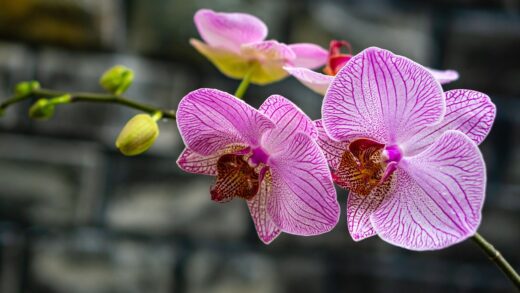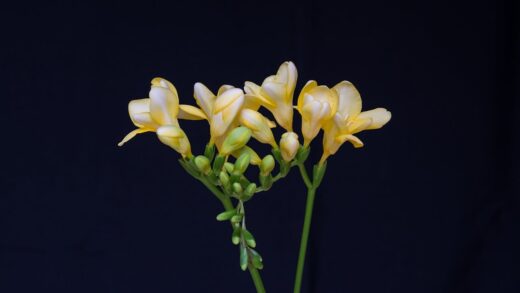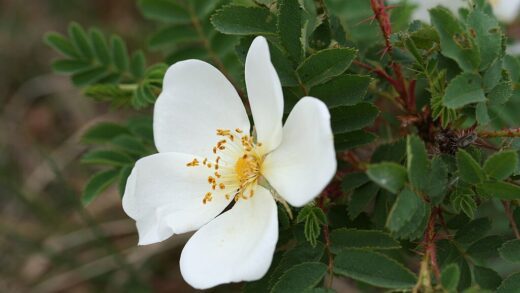Providing a consistent and balanced diet is essential for encouraging the lush growth and prolific blooming that African violets are known for. These plants are relatively heavy feeders, meaning they regularly consume nutrients from their potting medium to fuel their development. In the confined space of a pot, these nutrients are quickly depleted, making regular fertilization a non-negotiable aspect of their care. The key is to supply a steady stream of essential macro and micronutrients in a form that the plant can easily absorb, without overwhelming its delicate root system. An appropriate fertilization regimen is the difference between a plant that merely survives and one that truly flourishes with vibrant foliage and a constant display of flowers.
The three primary macronutrients that are crucial for plant health are nitrogen (N), phosphorus (P), and potassium (K). Nitrogen is vital for promoting healthy, green leaf growth. Phosphorus plays a key role in root development and is especially important for stimulating the production of flowers. Potassium contributes to the overall vigor and disease resistance of the plant. A good fertilizer for African violets will provide these three nutrients in a balanced ratio. For general maintenance, a formula like 20-20-20 is excellent, while a formula with a higher middle number (phosphorus), such as 15-30-15, is often used to specifically encourage more abundant blooming.
Beyond the big three macronutrients, African violets also require a range of micronutrients, albeit in much smaller quantities. These include elements like iron, manganese, boron, and molybdenum, which play critical roles in various metabolic processes like chlorophyll production and nutrient uptake. A high-quality, complete fertilizer will list these micronutrients on its label. Using a fertilizer that provides these trace elements is important for preventing nutrient deficiencies that can manifest as discolored leaves or poor growth, even when the primary macronutrients are being supplied.
The form of the fertilizer is also a matter of preference and convenience. Liquid and water-soluble powder fertilizers are the most common and are generally considered the most effective for African violets. They are mixed with water and applied during irrigation, making the nutrients immediately available to the plant’s roots. Granular, slow-release fertilizers are less commonly used for these plants because they can release nutrients unevenly and make it more difficult to control the dosage, potentially leading to root burn. Therefore, a liquid feed approach is almost always the recommended method for these sensitive plants.
Choosing the right fertilizer
When selecting a fertilizer, the options can seem overwhelming, but you can narrow them down by looking for a few key characteristics. Firstly, opt for a product that is specifically formulated for African violets if possible. These specialized fertilizers are designed with the precise nutrient ratios and pH levels that these plants prefer. If a violet-specific food is not available, a well-balanced, all-purpose houseplant fertilizer is a perfectly acceptable alternative. Check the N-P-K ratio on the label; a balanced ratio (e.g., 20-20-20) is ideal for consistent growth, while a “bloom booster” formula (e.g., 10-30-20) can be used to promote flowering.
It is also important to choose a urea-free fertilizer if you can. Urea is a common source of nitrogen in many synthetic fertilizers, but it must be broken down by microorganisms in the soil before the plant can use it. In the soilless, sterile mixes typically used for African violets, these microorganisms are not abundant, meaning the urea can remain unused and may even build up to levels that can damage the roots. Fertilizers that derive their nitrogen from nitrates are more readily available for the plant to absorb and are generally considered a safer choice.
The concentration of the fertilizer is another factor to consider. Most commercial fertilizers are highly concentrated and must be diluted significantly before use. It is absolutely critical to follow the dilution instructions on the product packaging, or even to dilute it further. A common and highly effective practice for African violets is to use a “constant feed” method, where the fertilizer is diluted to one-quarter or one-eighth of the recommended strength and is then used with every single watering. This provides a gentle, continuous supply of nutrients that the plant can use efficiently without the risk of root burn.
Organic fertilizers are an option for those who prefer to avoid synthetic chemicals, but they come with their own set of considerations. Organic options like fish emulsion or compost tea can be effective, but they can also be less consistent in their nutrient content and may have a strong odor. They also rely on microbial activity to break down and release nutrients, which can be slower in a soilless potting mix. For consistent results and precise control, most expert African violet growers tend to rely on high-quality synthetic, water-soluble fertilizers.
Fertilizing techniques and schedule
The most widely endorsed fertilizing technique for African violets is the constant feed, micro-dosing method. As mentioned, this involves adding a very small, diluted amount of fertilizer to the water every time you irrigate the plant. For example, if the fertilizer label recommends mixing one teaspoon per gallon of water for monthly feeding, you would instead mix just one-quarter of a teaspoon (or even one-eighth) into that same gallon of water and use this solution every time the plant needs watering. This approach provides a steady, gentle nourishment that prevents the shock of infrequent, heavy feedings.
When using this method, it is crucial to apply the fertilizer solution to soil that is already slightly moist. Applying fertilizer to completely dry soil can cause the concentrated salts to rapidly draw moisture out of the roots, causing chemical burn and significant damage. If your plant has become very dry, it is best to first water it lightly with plain, unfertilized water. Then, about an hour later, you can proceed with watering it again using the diluted fertilizer solution. This ensures the roots are hydrated and prepared to absorb the nutrients safely.
The feeding schedule should be adjusted based on the time of year and the plant’s growth cycle. African violets do most of their active growing and blooming when light levels are high and temperatures are warm, typically in the spring and summer. During this period, the constant feed method is ideal. However, in the autumn and winter, when light levels and duration decrease, the plant’s growth naturally slows down. During this semi-dormant period, you should reduce fertilization to half strength or apply it only every other watering. Some growers even stop fertilizing completely until growth picks up again in the spring.
It is also important to periodically flush the soil to prevent the buildup of fertilizer salts. Even with dilute feeding, salts can accumulate in the potting medium over time. About once every two to three months, it is a good practice to water the plant thoroughly from the top with plain, room-temperature water. Let the water run through the pot and out the drainage holes for several minutes. This leaching process effectively washes away the excess salts and “resets” the soil, preventing toxicity issues from developing in the root zone.
Signs of nutritional problems
Recognizing the visual cues of nutrient imbalances is a key diagnostic skill for any plant owner. An under-fertilized African violet will often appear listless and will fail to thrive. The most common signs include slow or stunted growth, the development of small, pale green or yellowish leaves (a condition known as chlorosis), and a pronounced lack of flowering. The lower, older leaves are often the first to turn yellow as the plant moves mobile nutrients from them to support new growth. If you observe these symptoms, it is a clear indication that your plant needs a more consistent supply of food.
Conversely, over-fertilization can be just as damaging, if not more so. One of the classic signs of too much fertilizer is the appearance of a rusty or crusty brown residue on the rim of the pot or on the surface of the soil. The center leaves of the plant may become tight, brittle, or distorted. The edges of the leaves may look brown and burnt, which is a direct result of the root tips being damaged by excessive fertilizer salts. In severe cases, the entire plant will wilt and the root system will be destroyed.
Specific nutrient deficiencies can sometimes be identified by particular symptoms, though this can be difficult without professional analysis. For example, a lack of phosphorus, the key nutrient for blooming, will result in a lush plant with deep green leaves that simply refuses to produce flowers. An iron deficiency often manifests as yellowing between the veins of the younger, newer leaves. However, in most cases, a general failure to thrive is addressed by ensuring the plant is on a regular schedule with a high-quality, balanced fertilizer that contains all the necessary macro and micronutrients.
If you suspect you have over-fertilized your plant, immediate action is required. First, gently scrape off any visible salt deposits from the soil surface and the pot rim. Then, you must leach the soil thoroughly as described before. Place the plant in a sink and run a gentle stream of lukewarm water through the pot for five to ten minutes to flush out the excess salts. After this flushing, allow the pot to drain completely and withhold any further fertilizer for several weeks, allowing the plant time to recover. Once it shows signs of healthy new growth, you can resume a very dilute feeding schedule.
Special considerations
Variegated African violets, those with white, cream, or pink markings on their leaves, have slightly different nutritional needs than their solid green counterparts. The variegated portions of the leaves lack chlorophyll and cannot photosynthesize. These varieties are often more sensitive to fertilizers, particularly those high in nitrogen, which can encourage the plant to produce more green growth at the expense of its beautiful variegation. For these plants, it is often recommended to use a fertilizer with a lower nitrogen content or to dilute a balanced fertilizer even further.
The pH of the soil is another critical factor that affects the plant’s ability to absorb nutrients. African violets prefer a slightly acidic soil, with a pH range of about 6.4 to 6.9. If the soil becomes too acidic or too alkaline, certain nutrients can become “locked up” and unavailable to the plant, even if they are present in the soil. Using a high-quality peat-based potting mix will usually provide the correct starting pH. Over time, watering with hard, alkaline tap water can cause the pH to rise. The periodic flushing of the soil helps to prevent this, as does the use of a balanced, slightly acidic fertilizer.
When propagating new plants from leaf cuttings, you should not apply any fertilizer until the new plantlets have developed their own root systems and are growing independently. The parent leaf contains all the stored energy needed to produce the new babies. Once the plantlets have been separated and potted on their own, you can begin a very weak fertilizing program, using a solution that is about one-eighth of the recommended strength. As the young plants mature and grow larger, you can gradually increase the fertilizer concentration to the standard quarter-strength solution.
Finally, it is important to remember that fertilizer is not a cure-all for a struggling plant. If your African violet is unhealthy, you must first diagnose the underlying problem, which could be related to light, water, or soil, before you start adjusting your fertilizer routine. Fertilizing a plant that is already stressed by poor environmental conditions or disease will only make the problem worse. Proper fertilization is just one component of a holistic approach to care, and it is most effective when all other cultural requirements are being met.



















